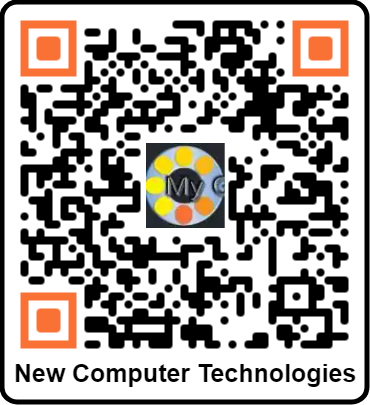New Computer Technologies
In our rapidly evolving digital landscape, new computer technologies are revolutionizing the way we live, work, and interact with the world around us.
From advancements in artificial intelligence and machine learning to the development of quantum computing and the proliferation of cloud services, these innovations are not only enhancing productivity but also reshaping entire industries.
As organizations increasingly rely on data-driven decision-making, the ability to harness and analyze vast amounts of information becomes paramount.
Furthermore, emerging technologies such as edge computing and the Internet of Things (IoT) are creating unprecedented opportunities for connectivity and efficiency, paving the way for smarter cities and more responsive systems.
This article delves into the latest breakthroughs in computer technologies, exploring their implications for businesses and consumers alike.
By examining trends such as enhanced cybersecurity measures, the rise of automation, and the integration of augmented and virtual reality, we aim to provide a comprehensive overview of how these advancements are setting the stage for future innovations.
As we stand on the brink of a new technological era, it is essential to understand the potential these developments hold for enhancing our day-to-day lives and driving economic growth in the years to come.
Table of Contents New Computer Technologies
Artificial Intelligence enhances decision-making processes significantly
The integration of advanced computational techniques in decision-making frameworks allows organizations to analyze vast amounts of data quickly and accurately.
By leveraging machine learning algorithms and predictive analytics, businesses can uncover patterns and insights that would be nearly impossible to discern manually.
This capability not only aids in forecasting trends but also facilitates real-time adjustments to strategies based on evolving market conditions, ultimately leading to more informed and timely decisions.
Moreover, the capacity for machines to process information without bias enhances objectivity in decision-making.
This reduction in human error and emotional influence ensures that choices are grounded in data-driven evidence, which is crucial for risk assessment and resource allocation.
As a result, organizations can achieve greater operational efficiency and strategic alignment, positioning themselves to navigate complex environments with agility and precision.
Quantum computing revolutionizes complex problem-solving capabilities
Harnessing the unique principles of quantum mechanics, this emerging field significantly enhances the ability to tackle problems that are currently beyond the reach of classical computers.
By utilizing qubits, which can exist in multiple states simultaneously, quantum computing enables a level of parallelism that accelerates complex computations, making it particularly effective for optimization problems, cryptography, and large-scale simulations.
Industries such as pharmaceuticals and finance are already beginning to explore quantum algorithms to expedite drug discovery and enhance risk modeling, respectively.
The potential for quantum computing to process and analyze vast datasets at unprecedented speeds opens new avenues for innovation across various sectors.
Complex problems that involve numerous variables and require intricate calculations can be approached with newfound efficiency, leading to solutions that were once deemed impractical.
As this technology continues to evolve, it is poised to redefine the landscape of problem-solving, providing organizations with the tools to unlock insights and develop strategies that capitalize on the complexities of their respective fields.
5G technology improves internet connectivity speeds
The advent of advanced mobile networks has transformed the landscape of internet connectivity, delivering remarkably faster speeds compared to previous generations.
With its high bandwidth and low latency characteristics, this technology facilitates seamless streaming, rapid downloads, and instantaneous access to cloud services, ultimately enhancing user experiences across a multitude of devices.
This enhancement is particularly significant in urban areas, where the demand for reliable and swift internet access continues to soar.
Furthermore, the implementation of this technology supports the proliferation of Internet of Things (IoT) devices, enabling smart cities, autonomous vehicles, and advanced industrial automation to function optimally.
As more devices connect to the network, the sustained improvements in speed and reliability will be essential for managing the increased data traffic.
This connectivity revolution not only empowers consumers but also drives innovation across industries, leading to smarter solutions and fostering economic growth in an increasingly digital world.
Cloud computing enables flexible data storage solutions
The shift to cloud-based storage solutions has revolutionized the way organizations manage and access their data.
By leveraging scalable resources, businesses can adjust their storage capacities in real-time to align with fluctuating demands, eliminating the need for significant upfront investments in physical infrastructure.
This flexibility allows enterprises to respond swiftly to changing market conditions, ensuring that they can accommodate growth or reduce usage without compromising performance.
Moreover, cloud storage enhances collaboration and data accessibility, enabling teams to work together efficiently regardless of their geographical locations.
With centralized data repositories, employees can easily share and access vital information from any device with an internet connection, streamlining workflows and improving productivity.
The integration of advanced security measures further ensures that sensitive data remains protected, making cloud solutions not only flexible but also reliable for various organizational needs.
Virtual Reality creates immersive user experiences
Immersive user experiences are significantly enhanced through the use of advanced visualization techniques that transport participants into richly detailed virtual environments.
This technology engages multiple senses, creating a sense of presence that traditional media cannot achieve.
Users can interact with their surroundings in a manner that feels natural and intuitive, whether they are navigating through a simulated space, manipulating virtual objects, or even participating in collaborative activities with others in real-time.
This level of engagement fosters deeper learning and retention, making it particularly beneficial in educational settings, training programs, and therapeutic applications.
Furthermore, the adaptability of virtual environments allows for tailored experiences that cater to individual preferences and needs.
By utilizing haptic feedback and spatial audio, developers can create a multisensory experience that resonates on a personal level, enhancing emotional connections and understanding.
This capability extends the potential of virtual reality beyond mere entertainment, positioning it as a powerful tool for industries such as healthcare, where therapeutic simulations can provide safe spaces for patients to confront their fears or practice skills.
The ongoing evolution of this technology continues to push the boundaries of what is possible, opening new avenues for innovation and engagement across multiple fields.
Blockchain technology ensures secure data transactions
The integrity and security of data transactions are paramount in today’s digital landscape, and advanced distributed ledger technologies provide a robust solution to these challenges.
By employing cryptographic algorithms and decentralized consensus mechanisms, this technology ensures that each transaction is securely recorded across a network of nodes.
This decentralization mitigates the risks associated with single points of failure or centralized control, making it significantly harder for unauthorized parties to alter or manipulate data.
Additionally, the transparency inherent in these systems allows participants to verify transactions independently, fostering trust among users and stakeholders.
Moreover, the immutability of data once recorded on a blockchain enhances accountability and traceability.
Each transaction is linked to prior entries, creating an auditable chain that can be inspected without compromising sensitive information.
This feature is particularly valuable in sectors like finance, supply chain management, and healthcare, where secure and transparent data exchange is crucial.
As organizations increasingly recognize the importance of protecting sensitive information and ensuring compliance with regulatory frameworks, the adoption of this technology is likely to become a cornerstone of secure data transactions in the digital age.
Edge computing reduces latency for applications
By processing data closer to the source, significant improvements in response times can be achieved for various applications, particularly those requiring real-time analysis such as IoT devices, autonomous vehicles, and augmented reality systems.
This proximity not only minimizes the distance that data must travel but also alleviates the burden on centralized data centers, which can become bottlenecks under heavy loads.
As a result, applications operate more smoothly and efficiently, significantly enhancing user experience and enabling mission-critical operations to function seamlessly.
Furthermore, the integration of edge computing facilitates smarter data management strategies by filtering and analyzing information at the edge before transmitting only essential data to the cloud.
This selective approach reduces the volume of data sent over networks, further contributing to lower latency and bandwidth usage.
Ultimately, the shift towards edge computing represents a transformative change in how applications are designed and deployed, enabling a more responsive technological ecosystem that aligns with the demands of modern users and businesses.
Augmented Reality enhances real-world interactions effectively
By merging digital elements with the physical environment, a transformative layer of interaction is created that engages users in an immersive manner.
This technology allows for the visualization of complex data sets and simulations directly within the user’s surroundings, making information more accessible and actionable.
For instance, in industries such as healthcare, augmented reality can assist surgeons by overlaying critical patient data onto their field of view during procedures, thereby enhancing precision and decision-making processes.
In educational settings, augmented reality fosters deeper engagement by enabling students to interact with 3D models of anatomical structures or historical artifacts, bridging the gap between theoretical knowledge and practical application.
This interactive element not only enhances learning outcomes but also fosters collaboration among peers as they explore and manipulate digital content together.
As a result, real-world interactions are enriched, creating a more intuitive and engaging user experience that leverages the strengths of both physical and digital realms.
Machine Learning automates data analysis tasks
Leveraging advanced algorithms, sophisticated analytics, and vast datasets, this approach enables organizations to uncover patterns and insights that would be otherwise hidden within traditional analysis methods.
By automating repetitive analytical tasks, it frees data scientists and analysts to focus on more strategic activities, such as interpreting results and developing business strategies.
The ability to process and analyze data at scale not only accelerates the decision-making process but also enhances the accuracy of predictions and recommendations, leading to more informed and effective actions.
Moreover, the integration of machine learning into data workflows significantly reduces the potential for human error.
As these systems learn from historical data and continuously improve their models, they provide increasingly refined insights over time.
This dynamic adjustment allows businesses to respond swiftly to changing market conditions and customer preferences, ensuring a competitive edge in their respective industries.
Ultimately, the automation of data analysis tasks through machine learning serves as a catalyst for innovation, driving efficiency and enabling organizations to harness the full potential of their data assets.
Cybersecurity advancements protect against digital threats
The evolution of threat detection and response mechanisms is transforming the landscape of digital security.
Employing artificial intelligence and machine learning, modern cybersecurity frameworks can analyze network behavior in real time, identifying anomalies that may indicate a potential breach.
These advanced systems not only detect known threats but also adapt to recognize new and emerging risks, ensuring a proactive approach to safeguarding sensitive data and infrastructure.
By automating threat hunting and incident response, organizations can mitigate the impact of cyberattacks, reducing both recovery time and costs associated with breaches.
In addition to improved detection capabilities, the implementation of integrated security measures, such as zero trust architectures, enhances overall resilience against cyber threats.
These frameworks enforce strict identity verification for every individual and device attempting to access resources, minimizing the risk of unauthorized access.
As businesses increasingly shift to remote and hybrid work models, such advancements become critical in maintaining secure environments.
This proactive stance empowers organizations to defend against a rapidly evolving threat landscape, ensuring that data integrity and privacy remain paramount in an interconnected world.
In conclusion, the landscape of new computer technologies continues to evolve at an unprecedented pace, driving innovation and reshaping industries.
From advancements in artificial intelligence and machine learning to the proliferation of quantum computing and the Internet of Things, these technologies are not only enhancing efficiency and productivity but also creating new opportunities for businesses and individuals alike.
As we move forward, it is essential for organizations to remain agile and adaptable, embracing these advancements to stay competitive in a rapidly changing digital world.
By investing in new technologies and fostering a culture of continuous learning, we can harness their full potential and pave the way for a more connected and innovative future.








